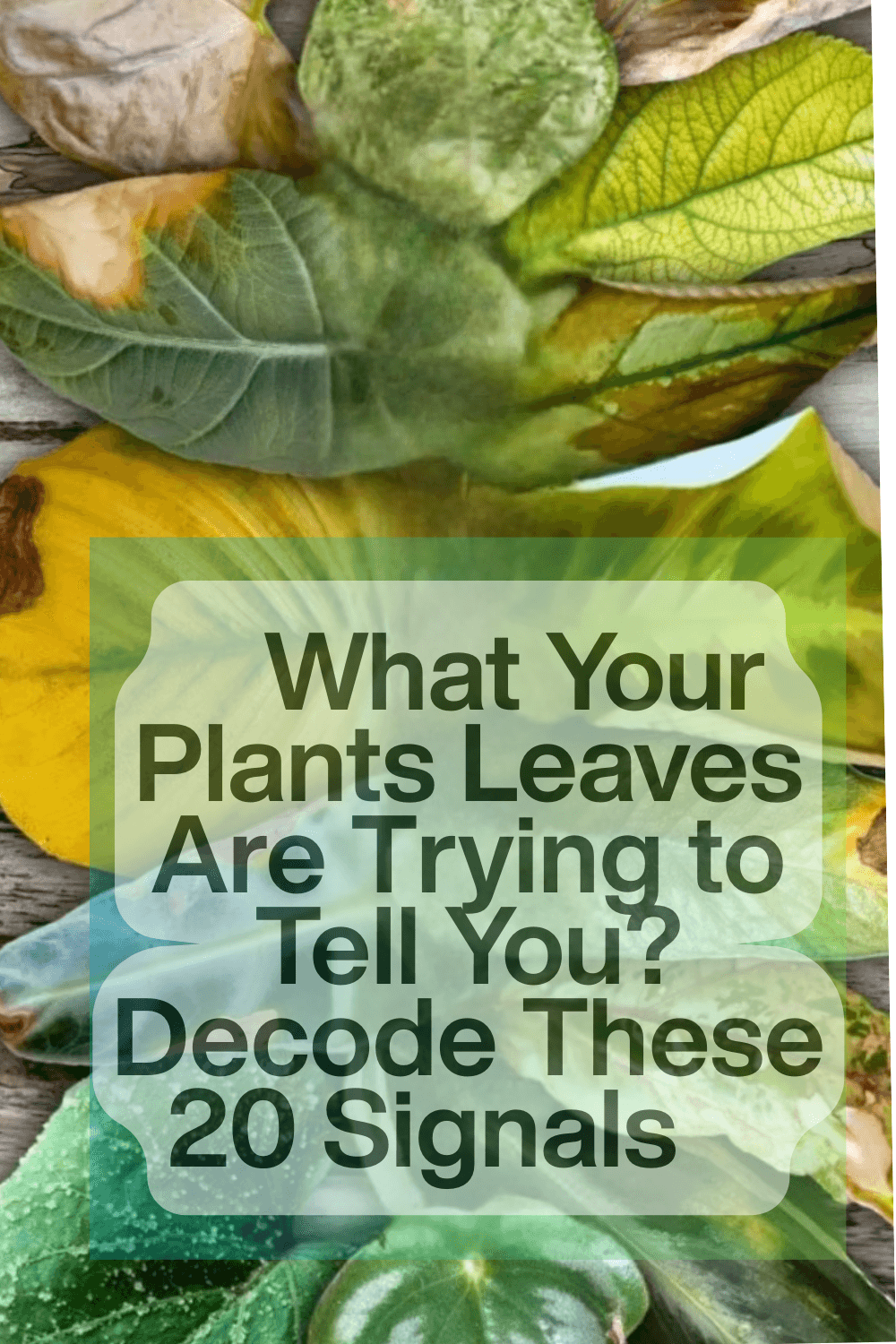Discover what your plants leaves are trying to tell you with 20 common signs, their meanings, and easy fixes. Keep your garden thriving naturally.
Noticing a change in your plant’s leaves can feel worrying. One day they’re vibrant and green, the next they’re yellow, curled, or spotted. The truth is, leaves are the plant’s way of speaking to you. They give clear signals about water, nutrients, pests, or stress.
If you’ve been asking yourself what your plants leaves are trying to tell you, this guide will walk you through 20 common leaf changes, what they mean, and how you can fix them.
1. Yellow Leaves
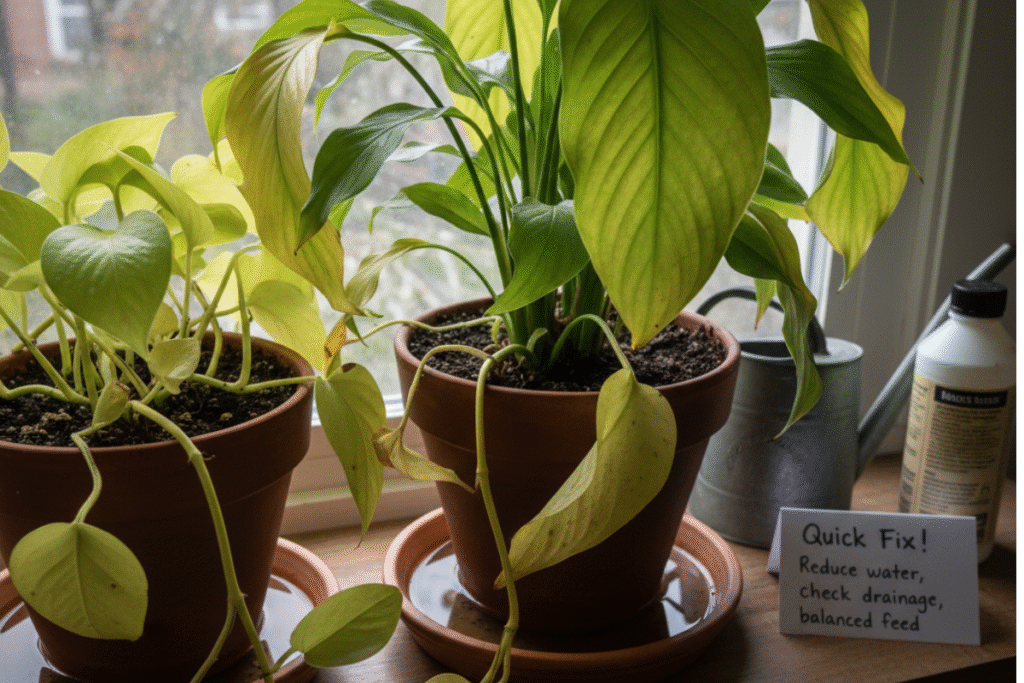
Yellowing is one of the most common issues. It often happens due to overwatering, poor drainage, or low light. Sometimes it signals nutrient deficiencies, such as a lack of nitrogen.
Indoor tropicals, such as pothos or peace lilies, are especially sensitive.
Quick Fix Tip: Reduce watering, check drainage, and feed with a balanced fertilizer.
See this DIY Natural Fertilizer for Indoor Plants: Boost Growth the Eco-Friendly Way
2. Brown and Crispy Leaves
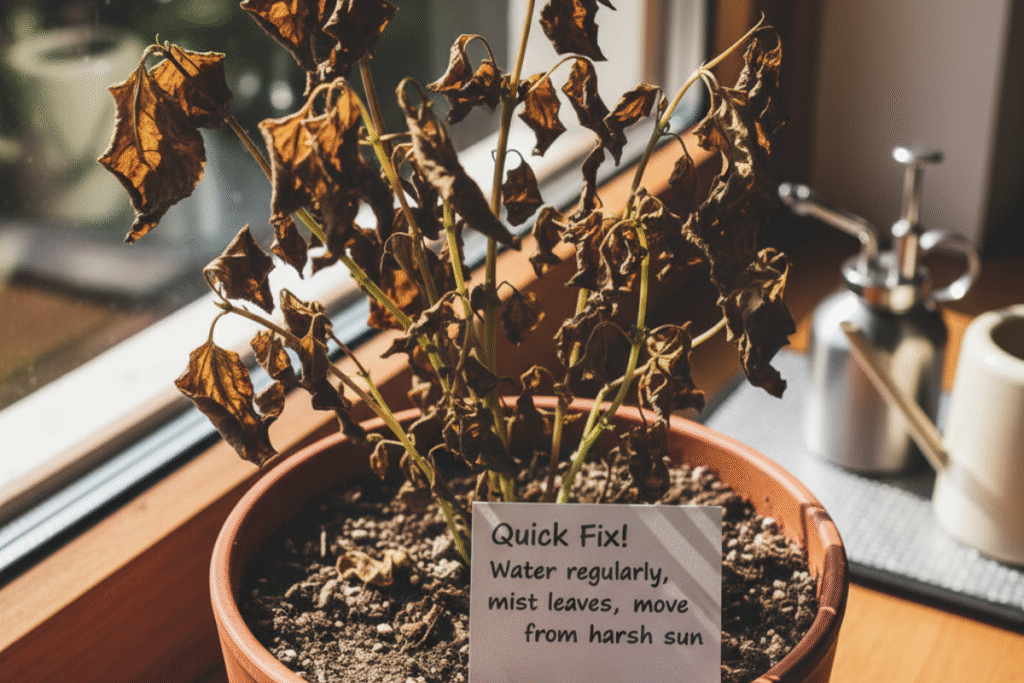
Leaves that appear burnt or dry typically indicate underwatering, low humidity, or excessive direct sunlight. Herbs like basil often crisp up in summer windows.
Quick Fix Tip: Water more regularly, mist leaves, and avoid exposure to harsh sunlight.
3. Black or Dark Spots
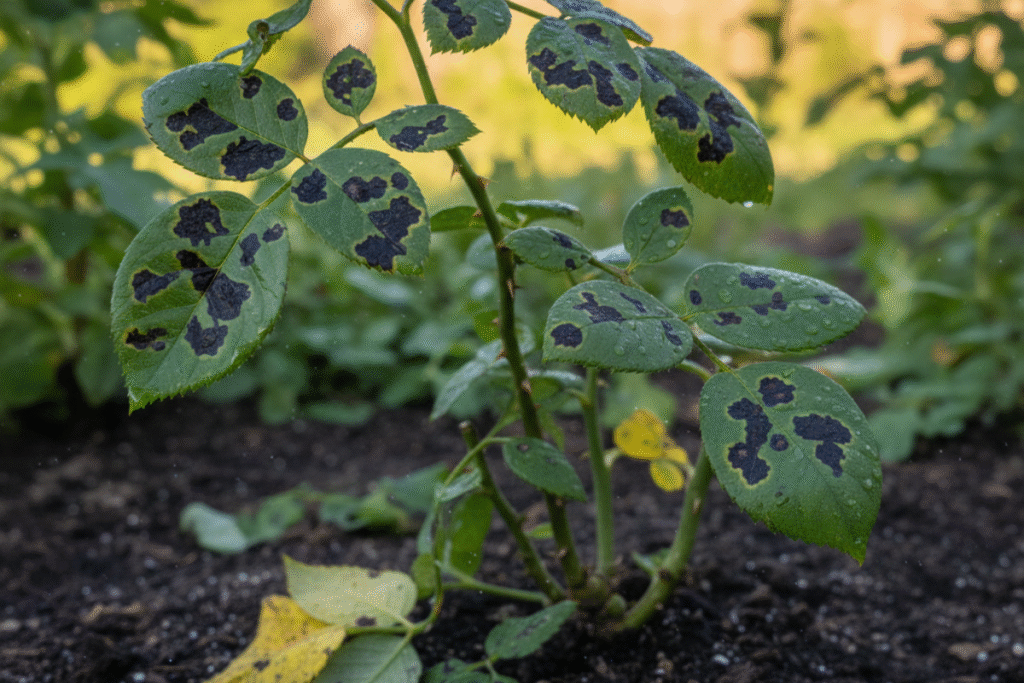
Spots are often a sign of fungal infections or damage caused by pests. Overly wet soil makes plants like roses and tomatoes prone to black spot disease.
Quick Fix Tip: Trim affected leaves, increase airflow, and apply a natural fungicide.
4. Pale or Light Green Leaves
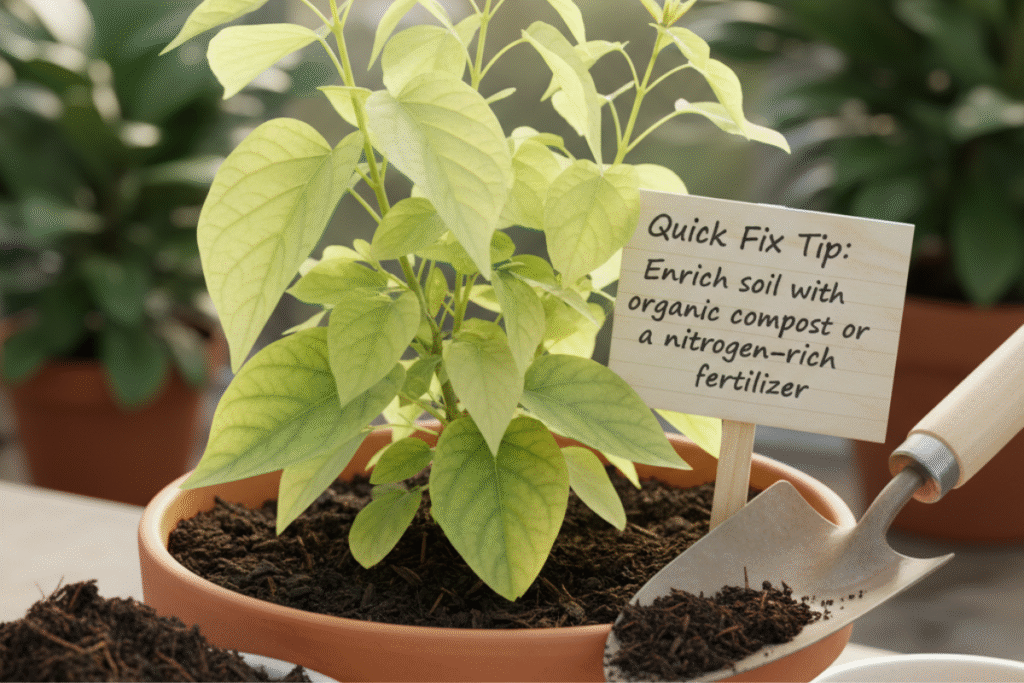
When leaves appear pale, the plant is often lacking essential nutrients — typically nitrogen, magnesium, or iron. New leaves will appear weak and thin.
Quick Fix Tip: Enrich soil with organic compost or a nitrogen-rich fertilizer.
5. Curling Leaves
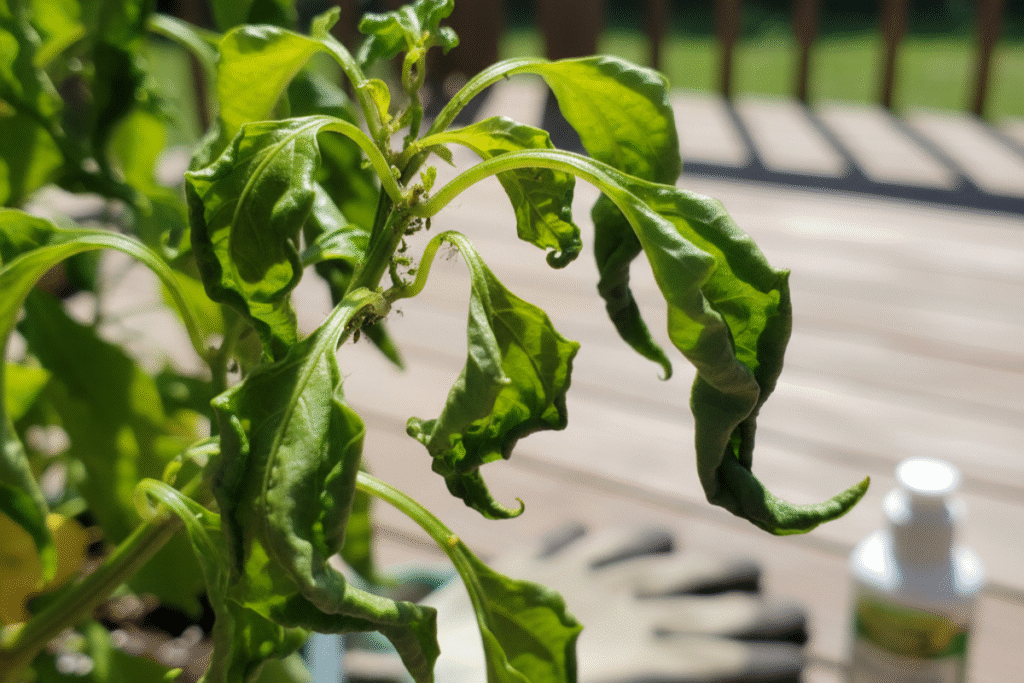
Curling can happen inward or outward. Causes include pests, fertilizer burn, or temperature stress. For example, peppers often curl when overheated.
Quick Fix Tip: Inspect for pests, reduce fertilizer, and stabilize temperatures.
6. Wilting Leaves
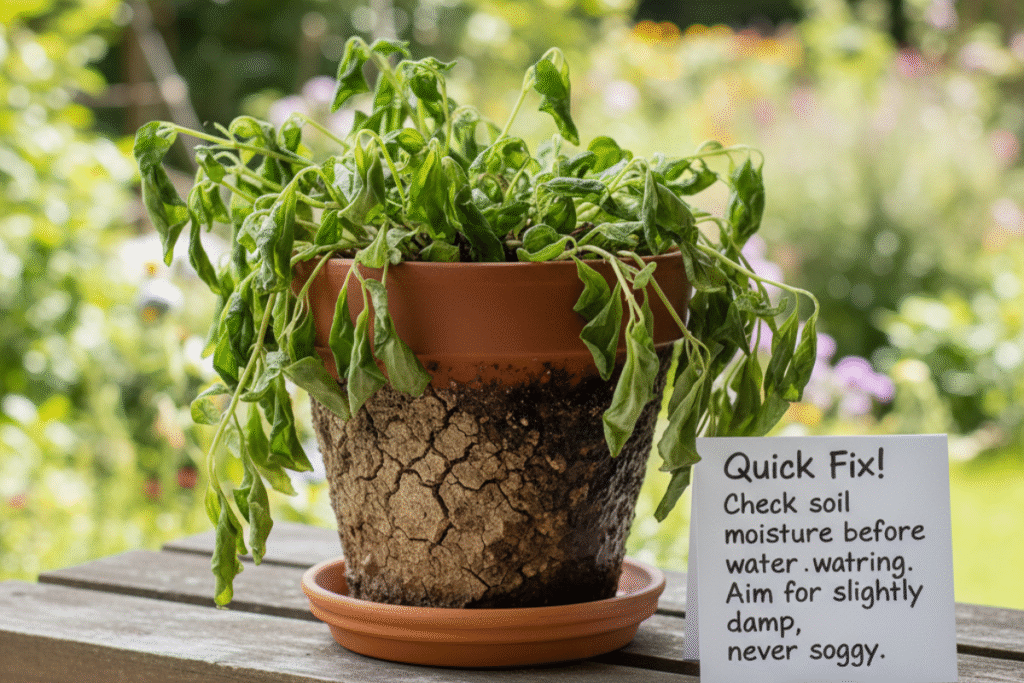
Wilting happens in both dry and soggy conditions. Overwatered roots suffocate, while dry soil starves them.
Quick Fix Tip: Check soil moisture before watering. Aim for slightly damp, never soggy.
7. Sticky or Shiny Leaves
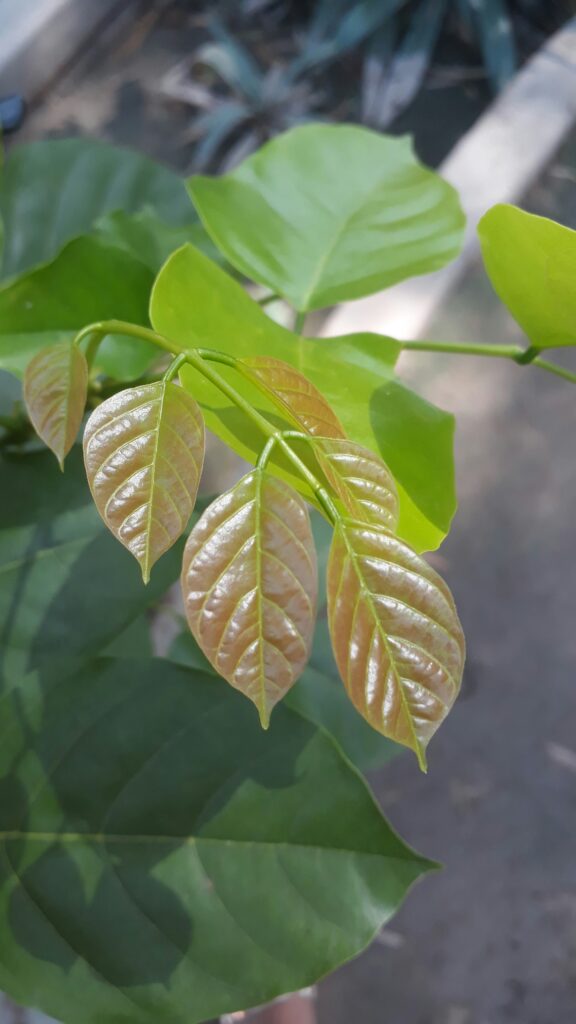
Sticky leaves are a classic sign of sap-sucking pests such as aphids. They leave behind honeydew that can attract ants.
Quick Fix Tip: Wipe down with soapy water and treat with neem oil.
8. Holes in Leaves
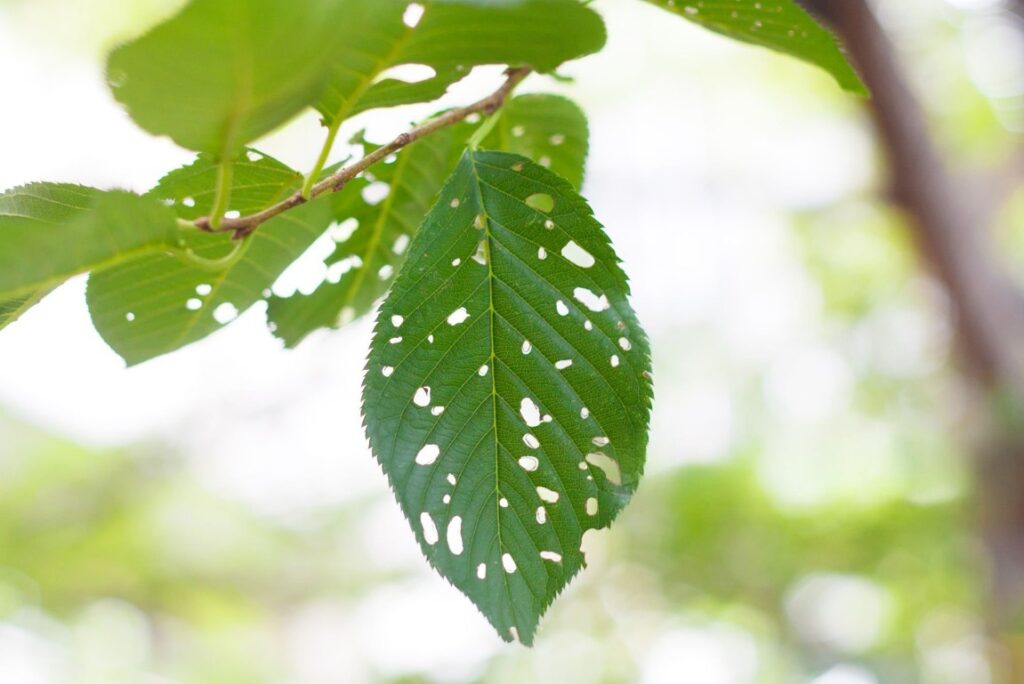
Pests like caterpillars, beetles, or slugs almost always cause chewed-up leaves. Outdoor plants face this the most.
Quick Fix Tip: Pick pests by hand, set up traps, or use organic sprays.
9. Dropping Leaves
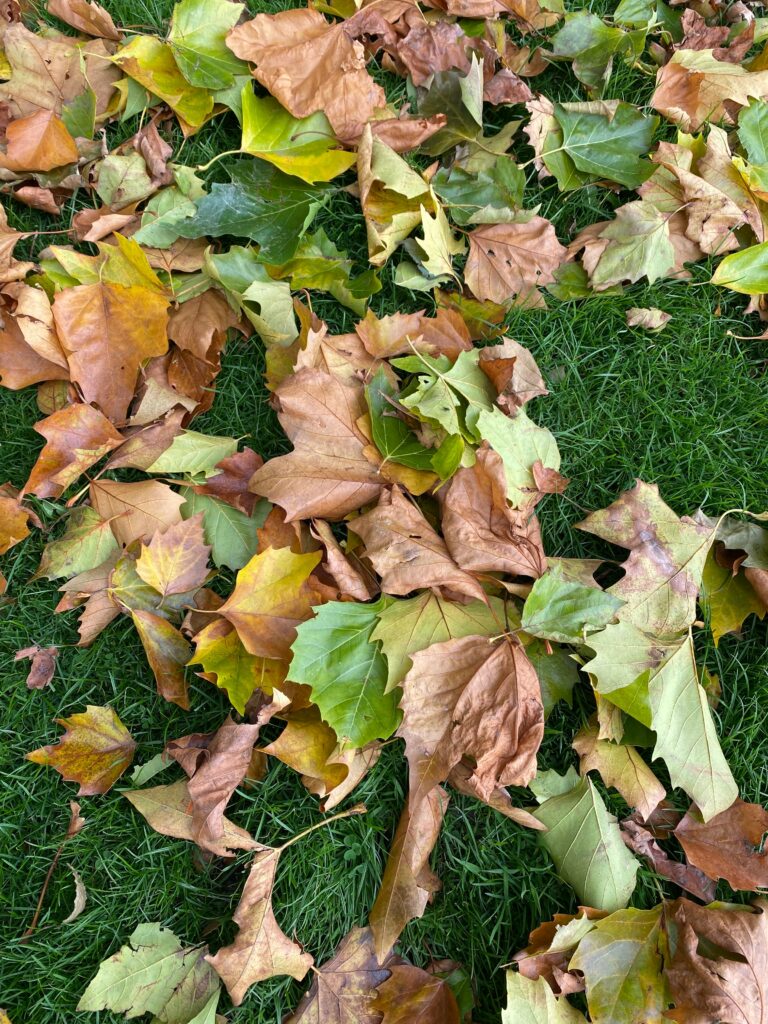
Leaf drop often occurs when plants are stressed by factors such as moving, irregular watering, or drafts. Ficus trees are famous for this.
Quick Fix Tip: Maintain stable conditions and avoid sudden environmental changes.
10. Red or Purple Leaves
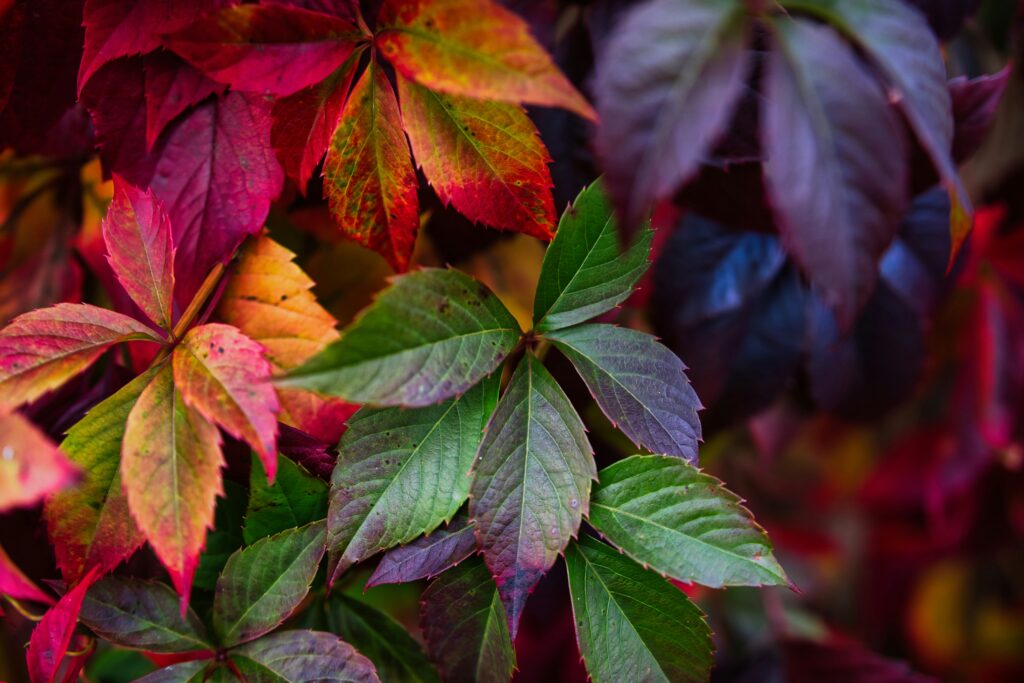
Some plants naturally shift colors, but unusual redness can indicate a phosphorus deficiency or cold shock. Tomatoes often turn purple in chilly soil.
Quick Fix Tip: Add phosphorus fertilizer and shield plants from cold.
11. Shiny, Waxy Leaves Turning Dull
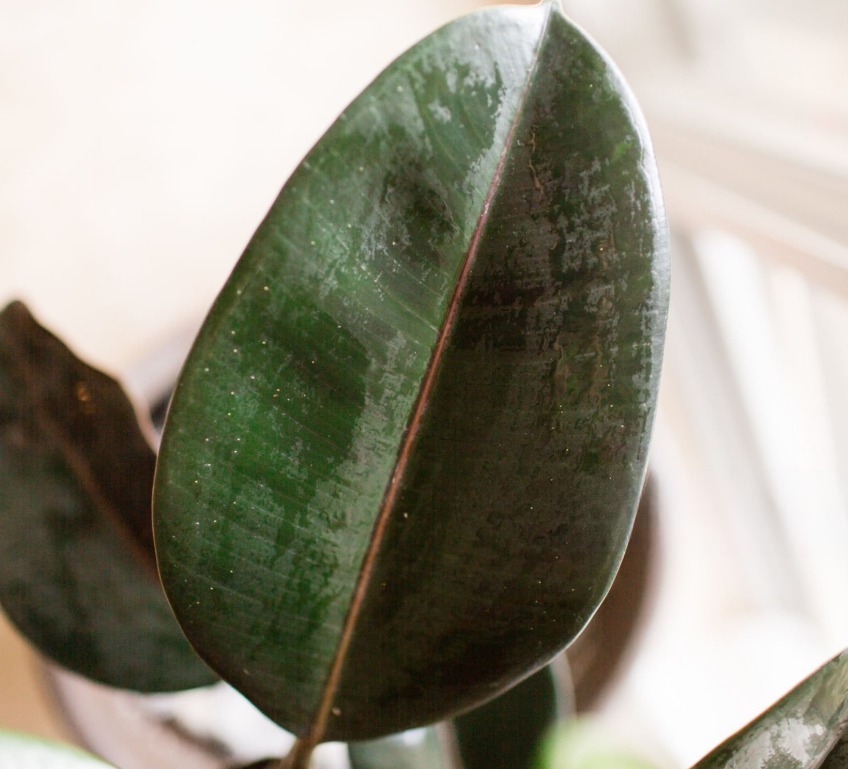
When glossy plants lose shine, it’s usually due to dust build-up or a lack of nutrients. Indoor plants, such as rubber trees, are most affected.
Quick Fix Tip: Wipe with a damp cloth and refresh soil nutrition.
12. Burnt Leaf Tips
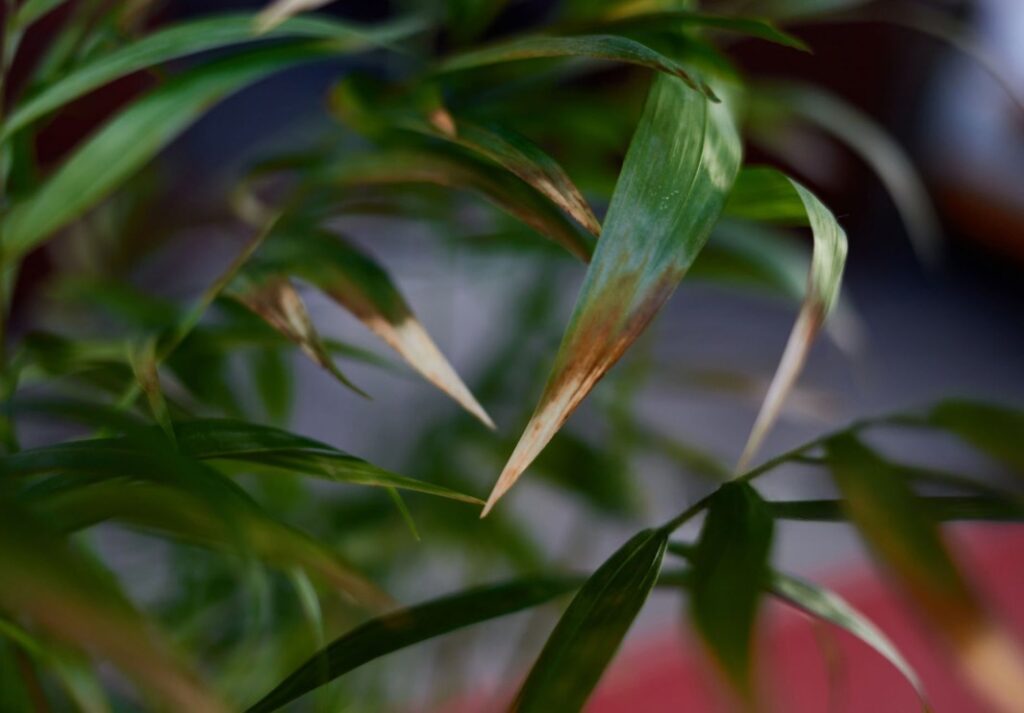
Brown, crispy tips usually mean over-fertilization or salt build-up from hard water. Spider plants often show this.
Quick Fix Tip: Thoroughly flush the soil and switch to filtered water.
13. Speckled or Mottled Leaves

Tiny speckles are a sure sign of spider mites. You may even spot fine webbing.
Quick Fix Tip: Isolate the plant and spray with insecticidal soap.
14. Soft and Mushy Leaves
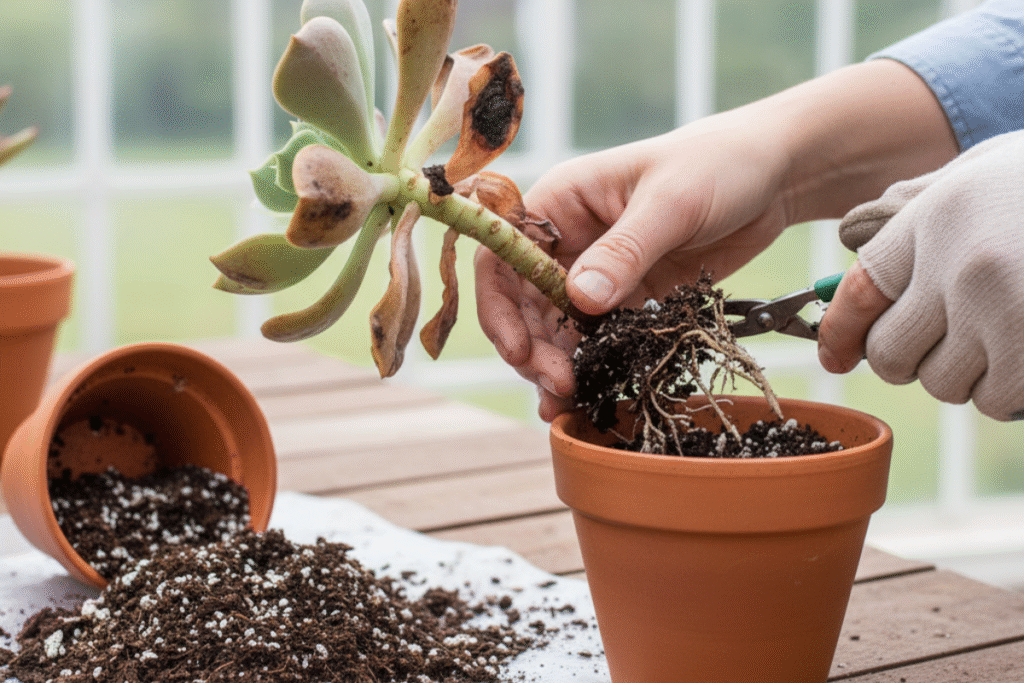
Mushy leaves are often caused by overwatering or root rot, which are common issues in succulents and cacti.
Quick Fix Tip: Repot in dry, well-draining soil and trim rotten roots.
15. Seasonal Color Changes
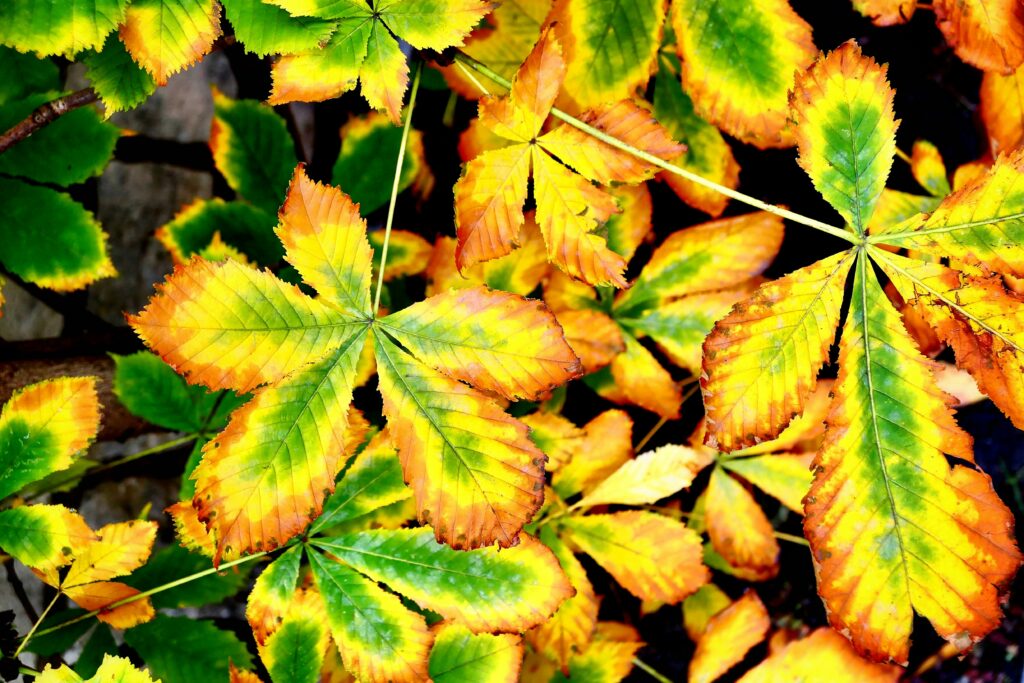
Sometimes leaf changes are natural — like deciduous plants dropping leaves in autumn.
Quick Fix Tip: Learn each plant’s natural rhythm so you don’t mistake seasonal changes for stress.
16. Leaves Turning White or Bleached
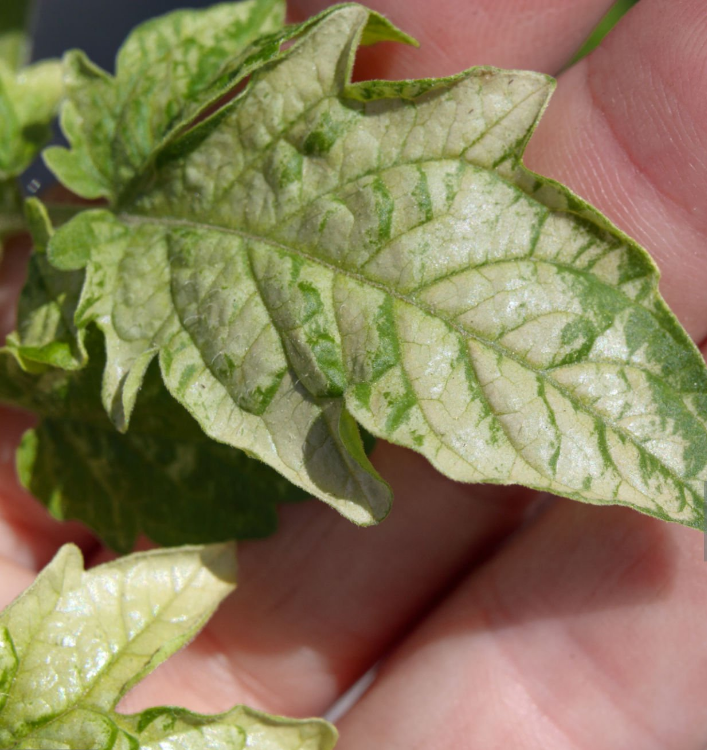
Leaves that look faded or bleached often suffer from sunburn. Orchids and ferns show this when exposed to intense light.
Quick Fix Tip: Move to bright but indirect light.
17. Leaves with Yellow Edges
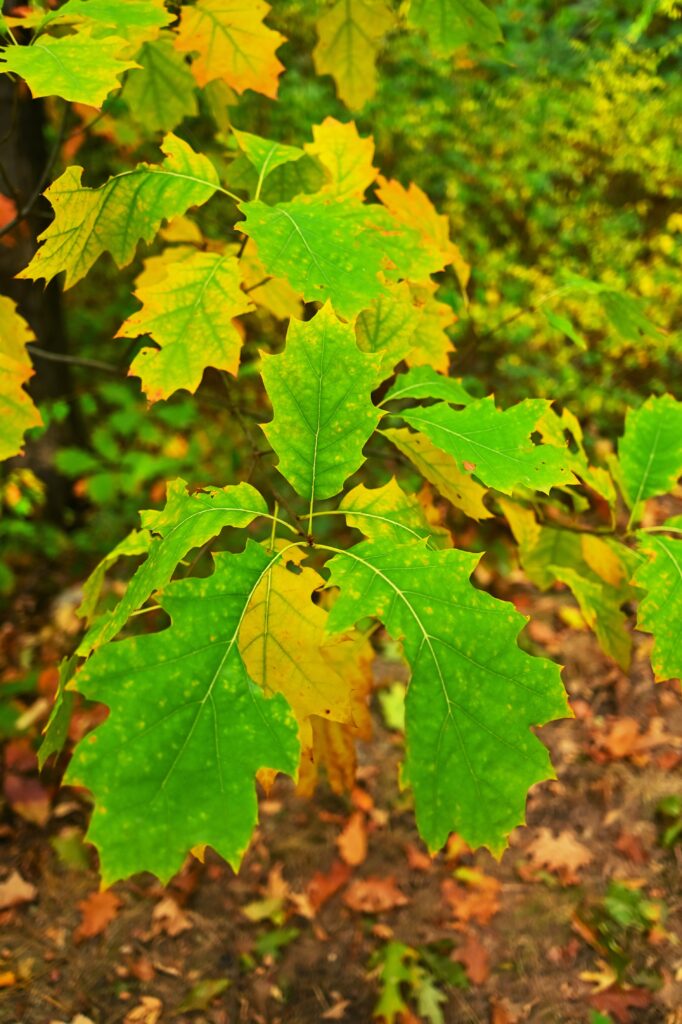
When the edges turn yellow while the center remains green, it’s often a sign of a potassium deficiency. Older leaves usually show it first.
Quick Fix Tip: Add potassium-rich fertilizer, such as banana peel tea.
18. Leaves with Uneven Patches
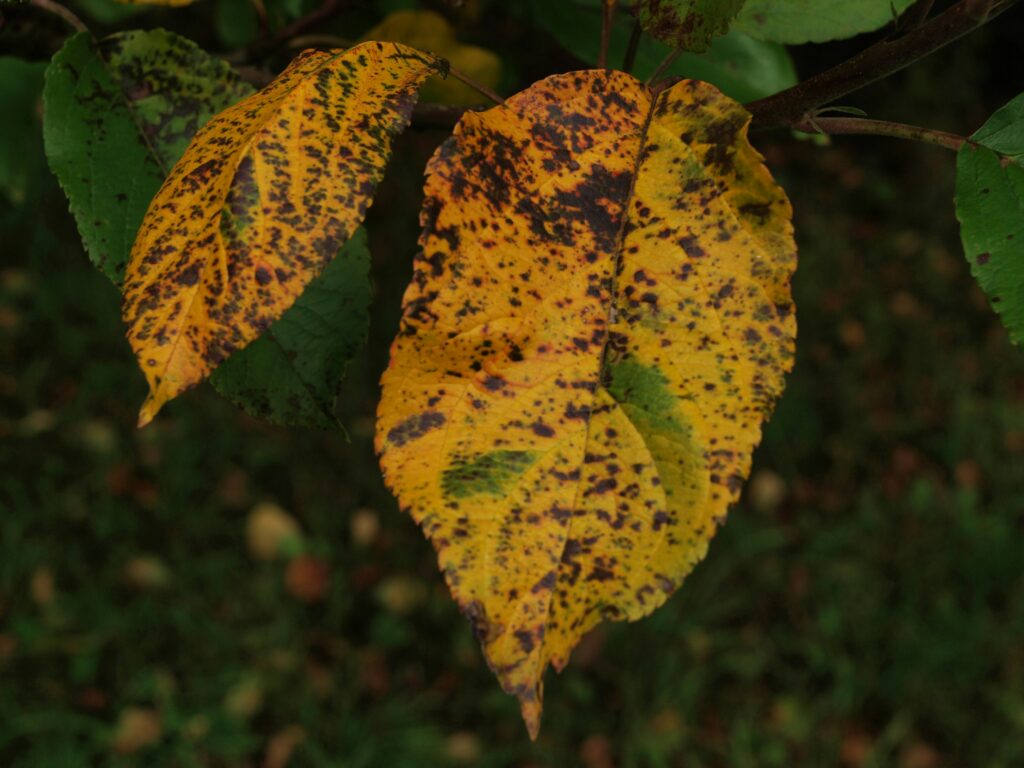
Blotchy, uneven patches can mean viral infections or severe nutrient imbalance. These usually spread fast.
Quick Fix Tip: Remove affected leaves and isolate the plant if viral signs persist.
19. Drooping in the Morning
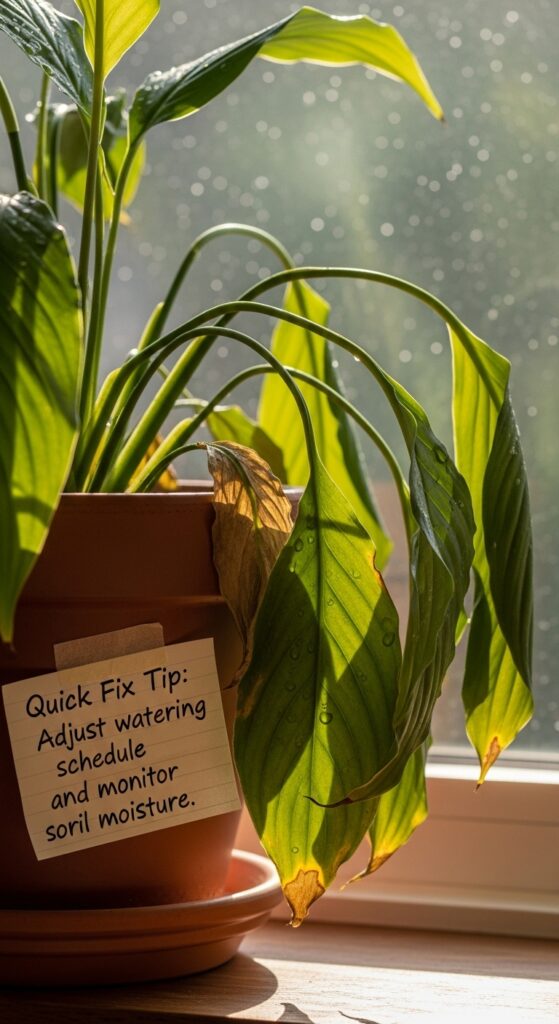
Some plants droop naturally at night but perk up in the Morning. If they stay droopy, it may be due to water stress.
Quick Fix Tip: Adjust watering schedule and monitor soil moisture.
20. New Leaves Growing Small
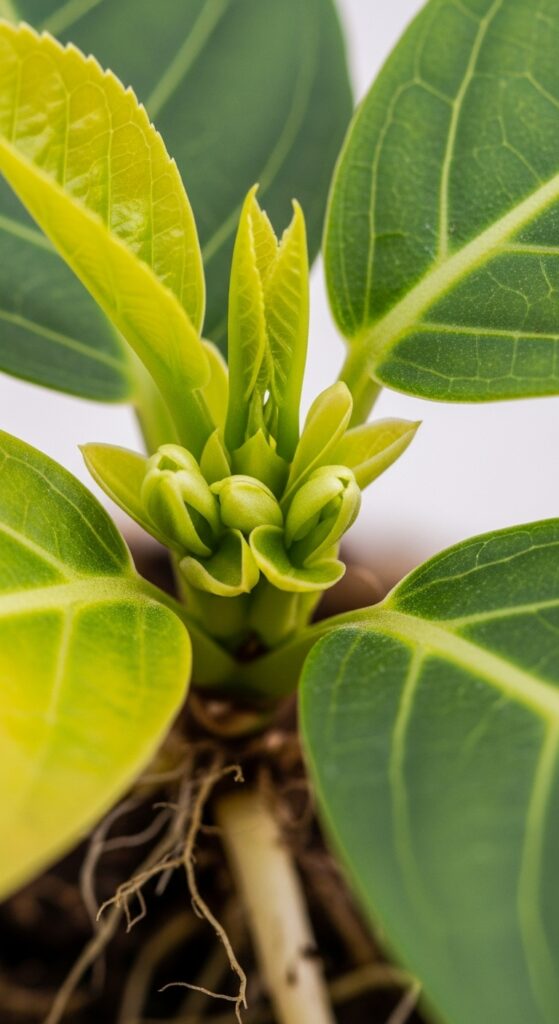
If new leaves are noticeably smaller, it signals nutrient deficiency or root-bound plants. Growth slows and leaves shrink.
Quick Fix Tip: Fertilize regularly and repot root-bound plants to promote healthy growth.
Final Thoughts: What Your Plants Leaves are Trying to Tell You
Leaves are like your plant’s diary — every color change, curl, or spot tells you what’s happening inside. By learning these signs, you’ll catch issues early, save struggling plants, and enjoy a thriving garden. The next time you wonder what your plants leaves are trying to tell you, remember: the answer is written in the leaves.
FAQs About Plant Leaves and Their Health
Q1: Why are my indoor plant leaves turning yellow?
Most often, it’s overwatering, poor drainage, or low light.
Q2: Can brown leaves turn green again?
No. Once brown, they won’t recover — focus on new growth.
Q3: Should I cut off dying leaves?
Yes, trimming helps redirect energy into healthier parts.
Q4: Why do plant leaves droop at night?
Many plants naturally droop as part of their circadian rhythm.

